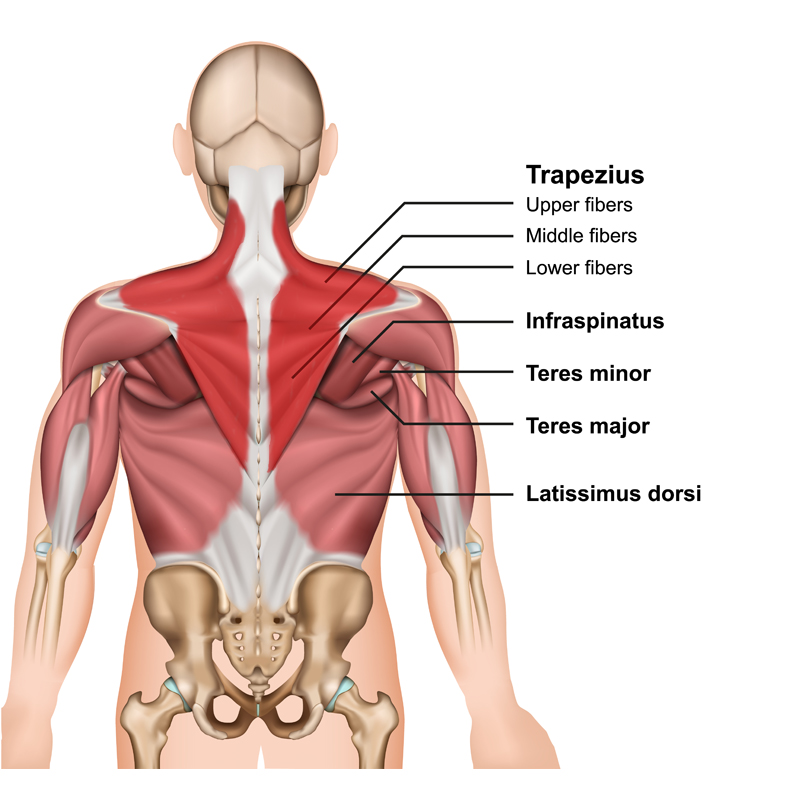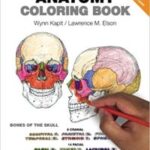
Upper Trapezius
Origin: External occipital protuberance,Medial third of the superior nuchal line, Nuchal ligament, Spinous process of C7
Insertion: Lateral third of the clavicle, Medial aspect of the acromion process of the scapula
Action: Upward rotation of the scapula, Elevation of the scapula
Innervation: Spinal accessory nerve (cranial nerve XI) and the ventral rami of spinal nerves C2, 3, 4 (for sensory function)
Blood Supply: Branches from the thyrocervical trunk
Primary Actions of the Upper Trapezius
1. Upward rotation of the scapula
Agonists:
- Serratus anterior (lower part)
- Trapezius (lower part)
Antagonists:
- Levator scapulae
- Serratus anterior (upper part)
- Rhomboid major
- Rhomboid minor
- Pectoralis minor
2. Elevation of the scapula
Agonists:
- Levator Scapulae
Antagonists:
- Serratus anterior (lower part)
- Trapezius (lower part)
- Pectoralis minor
Secondary Actions of the Upper Trapezius
1. Assists with extension of the cervical spine
Agonists:
- Sternocleidomastoid
- Rectus Capitis Posterior Major
- Rectus Capitis Posterior Minor
- Obliquus Capitis Superior
- Splenius Cervicis
- Splenius Capitis
- Ilocostalis Cervicis
- Longissimus Cervicis
- Longissimus Capitis
- Spinalis Cervicis
- Spinalis Capitis
- Semispinalis Cervicis
- Semispinalis Capitis
Antagonists:
- Longus Colli
- Longus Capitis
- Anterior Scalene
- Sternocleidomastoid
2. Assists with lateral flexion of the cervical spine
Agonists:
- Longus colli
- Rectus capitis lateralis
- Scalenes
- Sternocleidomastoid
- Obliquus capitis superior
- Splenius cervicis
- Splenius capitis
- Iliocostalis cervicis
- Longissimus capitis
Antagonists: Same muscles on the contralateral side
- Longus colli
- Rectus capitis lateralis
- Scalenes
- Sternocleidomastoid
- Obliquus capitis superior
- Splenius cervicis
- Splenius capitis
- Iliocostalis cervicis
- Longissimus capitis
3. Assists with contralateral rotation of the head and cervical spine when acting unilaterally
Agonists:
- Semispinalis capitis
- Semispinalis cervicis
- Multifidus
- Sternocleidomastoid
Antagonists: Same muscles on the contralateral side
- Semispinalis capitis
- Semispinalis cervicis
- Multifidus
- Sternocleidomastoid
Anterior scalene, middle scalene, the rotatores, and longus colli (inferior oblique) assist with contralateral rotation of the head and cervical spine.
Advertisement
Middle Trapezius
Origin: Spinous processes of T1 to T5
Insertion: Medial edge of the superior surface of the acromion process of the scapula, The superior edge of the scapular spine
Action: Retraction of the scapula
Innervation: Spinal accessory nerve (cranial nerve XI), The ventral rami of spinal nerves C2, C3, C4
Blood Supply: Branches from the thyrocervical trunk
Primary Actions of the Middle Trapezius
1. Retraction of the scapula
Agonists:
- Rhomboid major
- Rhomboid minor
Antagonists:
- Serratus anterior
- Pectoralis minor
Lower Trapezius
Origin: Spinous processes of T6 to T12
Insertion: Tubercles at the apex of the scapular spine
Action: Upward rotation of the scapula
Innervation: Spinal accessory nerve (cranial nerve XI), The ventral rami of spinal nerves C2, C3, C4
Blood Supply: Branches from the thyrocervical trunk
Primary Actions of the Lower Trapezius
1. Upward rotation of the scapula
Agonists:
- Trapezius (upper part)
- Serratus anterior (lower part)
Antagonists:
- Levator scapulae
- Serratus anterior (upper part)
- Rhomboid major
- Rhomboid minor
- Pectoralis minor
2. Depression of the scapula
Agonists:
- Serratus anterior (lower part)
- Pectoralis minor
Antagonists:
- Trapezius (upper part)
- Levator scapulae
Muscle Pain Information: The trapezius muscle contributes to pain in the neck, shoulder, arm, and upper back.

 An excellent book for those beginning the study of anatomy. Coloring helps memory retention.
An excellent book for those beginning the study of anatomy. Coloring helps memory retention. For intermediary anatomy students learning skeletal and muscle structure.
For intermediary anatomy students learning skeletal and muscle structure. For beginning and intermediary anatomy . Muscle overlays on the human body. Excellent visuals!
For beginning and intermediary anatomy . Muscle overlays on the human body. Excellent visuals!